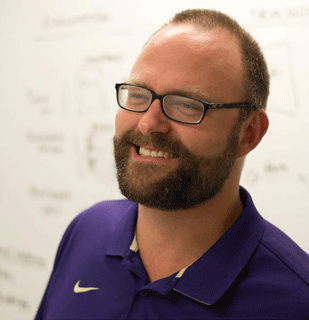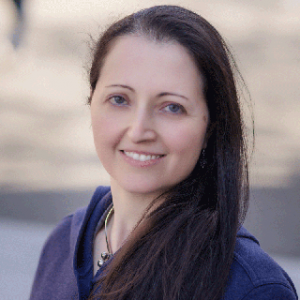- CREATE Co-Director Emeritus
The CREATE community thanks Dr. Jacob O. Wobbrock for three years of leadership as one of our founders and CREATE Co-Director Emeritus. A bright idea was sparked in 2019 at Microsoft’s IdeaGen 2030 discussion panel, where Wobbrock spoke about ability-based design. Wobbrock and panel member Katherine Steele, a CREATE associate director, thought that a center could bring faculty together and make them more than the sum of their parts. He returned to Microsoft with Jennifer Mankoff, Richard Ladner, and Anat Caspi to pitch Microsoft’s Chief Accessibility Officer, Jenny Lay-Flurrie, to support the new center. With additional support from Microsoft President Brad Smith, the center was launched in Spring 2020. Wobbrock, along with Mankoff, served as CREATE’s inaugural co-directors until June 2023.
My research seeks to scientifically understand people’s experiences of computers and information, and to improve those experiences through design and engineering, especially for people with disabilities. My specific research topics include input & interaction techniques, human performance measurement & modeling, HCI research & design methods, mobile computing, and accessible computing.
Affiliations
Professor, The Information School
Adjunct Professor, Paul G. Allen School of Computer Science & Engineering
Director, ACE Lab
The Slide Rule project invented the world’s first touch-based finger-driven screen reader for smartphones. The interaction techniques employed by Slide Rule influenced Apple in their creation of VoiceOver, their built-in smartphone screen reader, and subsequently TalkBack on Android. Developed from 2007 to 2008, today Slide Rule has directly influenced products shipping on billions of touch devices. This work was honored for its lasting impact at ACM ASSETS 2019.
A new design approach developed from 2011 to the present emphasizes what people can do and seeks to tailor technologies to people’s specific abilities through adaptation, customization, and ability-focused design practice. Interfaces that adapt their designs to their users’ abilities, touch recognizers that model their users’ touch behaviors, and mouse cursors that dynamically adapt their speeds to make pointing more accurate were all projects that came from, and informed, ability-based design, whose 2018 Communications of the ACM article has been influential at major companies, including Microsoft and Google.
Mouse pointing and text entry are still the most fundamental inputs we give desktop and laptop computing systems, but for many users, these bedrock input capabilities are still inaccessible. Since my doctoral research from 2001 to 2006, I have been inventing and evaluating more accessible means of providing input to computing systems. For example, my EdgeWrite text entry system provided more accessible text input using handheld devices, wheelchair joysticks, touchpads, and trackballs. My Pointing Magnifier software, a research project with Dr. Leah Findlater, provides a cursor replacement on Microsoft Windows that has been useful to people with motor or visual impairments, older adults, and graphic artists and designers.
Related news
- "Dude, what am I gonna do with a touchscreen? It's crazy. I can't feel anything."
- Ability-Based Design Mobile Toolkit: Developer Support for Runtime Interface Adaptation
- A11yBoard accessible presentation software
- CREATE Open Source Projects Awarded at Web4All
- Deep Gratitude to Wobbrock, Ladner & Caspi
- Jacob O. Wobbrock awarded Ten-Year Technical Impact Award
- Wobbrock Co-leads ACM UIST Conference, Brings Accessibility to the Conversation
- Large-Scale Analysis Finds Many Mobile Apps Are Inaccessible
- Ga11y improves accessibility of automated GIFs for visually impaired users
- VoxLens allows screen-reader users to interact with data visualizations



